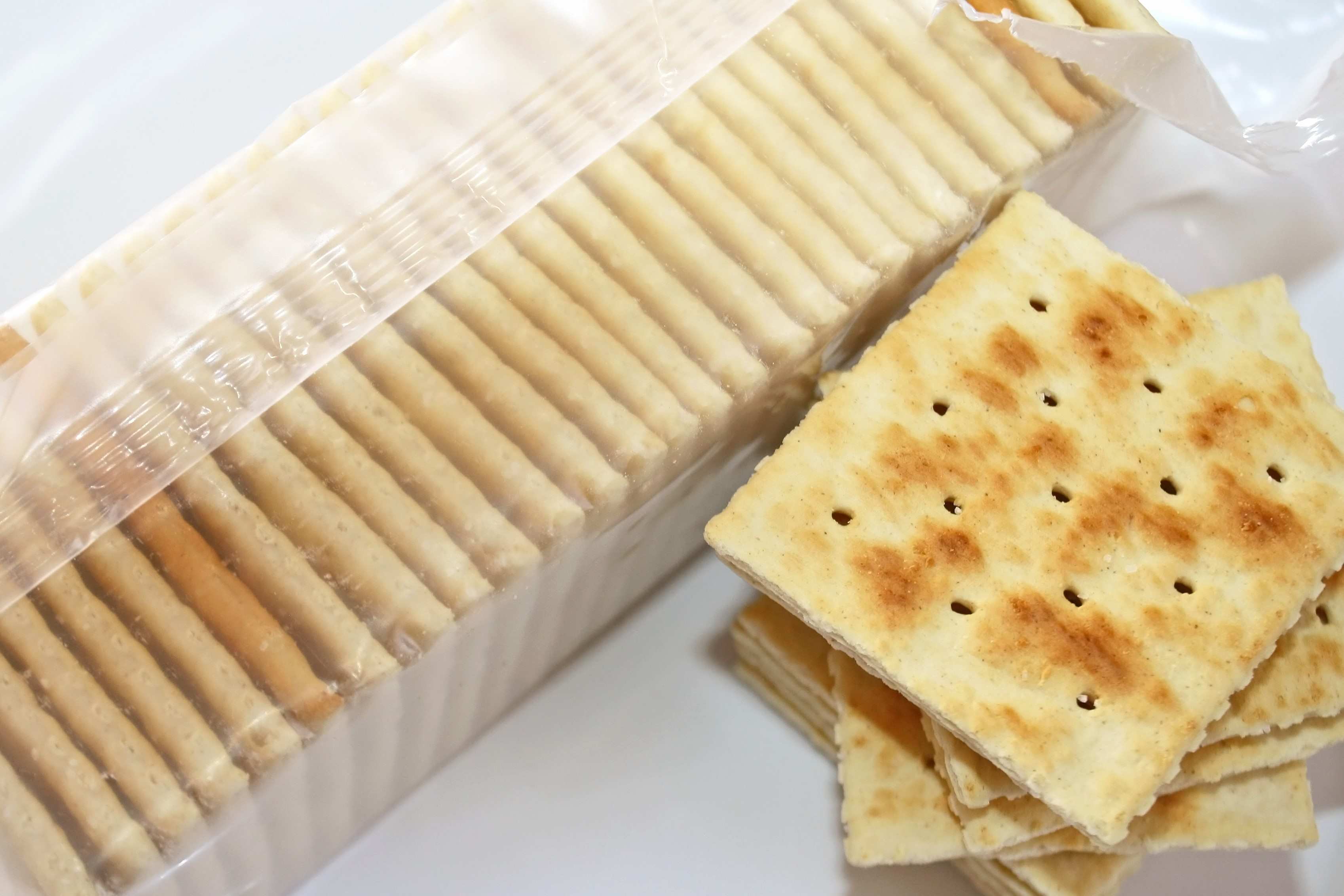
18 Unsalted Saltine Crackers Nutrition Facts
Key Takeaways:
- Unsalted saltine crackers are a low-calorie, low-fat snack with minimal sodium, making them a healthier alternative to high-fat snacks. They are versatile and can be enjoyed with various toppings.
- These crackers have a long shelf life, are budget-friendly, and suitable for individuals with specific dietary restrictions. They are also a convenient and mess-free snack option for road trips.
Calories
One serving of unsalted saltine crackers contains approximately 70 calories. These light and crispy crackers make for a low-calorie snack option.
Fat Content
There is minimal fat in unsalted saltine crackers, with less than 1 gram per serving. This makes them a healthier alternative to other high-fat snacks.
Sodium
Unsalted saltine crackers contain minimal sodium, making them suitable for individuals aiming to reduce their salt intake. The sodium content is less than 100 milligrams per serving.
Carbohydrates
A serving of unsalted saltine crackers contains approximately 14 grams of carbohydrates. These carbs provide energy and can be a good source of fuel during physical activities.
Fiber
While unsalted saltine crackers are not high in fiber, they still provide a small amount of dietary fiber, contributing to digestive health. Each serving contains around 1 gram of fiber.
Protein
Unsalted saltine crackers have a minimal protein content, with approximately 1 gram per serving. It’s important to incorporate other protein-rich foods into your diet to meet your daily protein requirements.
Vitamins and Minerals
Unsalted saltine crackers do not contain significant amounts of vitamins or minerals. They primarily serve as a light and crispy snack option, rather than a source of nutrients.
Serving Size
A serving size of unsalted saltine crackers is typically around 5 crackers. This portion size can be easily adjusted based on individual preferences and snacking habits.
Versatile Snack
Unsalted saltine crackers can be enjoyed on their own or paired with various toppings, such as cheese, spreads, or dips. Their neutral taste makes them a versatile snack option for any occasion.
Low Sugar Content
These crackers have minimal sugar content, which makes them suitable for individuals who are watching their sugar intake. They can be a healthier alternative to sweet snacks.
Gluten-Free Option Available
For individuals with gluten sensitivities or celiac disease, there are gluten-free unsalted saltine cracker options available in the market that can be enjoyed without compromising dietary restrictions.
Shelf Life
Unsalted saltine crackers have a relatively long shelf life, making them a convenient pantry staple that can be stored for extended periods without losing their crispness or flavor.
Popular in Recipes
Unsalted saltine crackers are commonly used in various recipes, such as homemade meatballs, crusts for casseroles, or as a crunchy topping for soups and salads.
Portion Control
The individual packaging of unsalted saltine crackers enables portion control, making it easier to manage snacking habits and avoid overeating.
Allergen Information
Unsalted saltine crackers are typically free from common allergens such as peanuts, tree nuts, and eggs. However, it’s always essential to check the package for specific allergen information.
Budget-Friendly
Unsalted saltine crackers are an affordable snack option that can fit into various budgets. They are readily available at most grocery stores.
Suitable for Dietary Restrictions
Unsalted saltine crackers are often suitable for individuals with specific dietary restrictions, such as low-sodium diets or those following a vegan lifestyle (depending on the brand and ingredients).
Great for Road Trips
Unsalted saltine crackers make a convenient and mess-free snack option for road trips, as they are easy to pack and have a long shelf life.
Conclusion
In summary, when looking at the nutrition facts of unsalted saltine crackers, it is clear that they can be a healthy snack option. With low sodium content and a good source of carbohydrates, they provide energy and satisfy cravings without adding excessive salt to your diet. Additionally, they are free of trans fats and cholesterol, making them a healthier alternative to many other crunchy snacks. However, it is important to consume them in moderation as they can be high in calories. Pairing them with a balanced diet and incorporating regular exercise will help you enjoy the delicious crunch of unsalted saltine crackers while maintaining a healthy lifestyle.
FAQs
1. Are unsalted saltine crackers a good choice for people with high blood pressure?
Yes, unsalted saltine crackers are a suitable choice for individuals with high blood pressure as they contain low sodium levels compared to regular salted crackers.
2. Can unsalted saltine crackers be part of a weight-loss diet?
Unsalted saltine crackers can be included in a weight-loss diet, but it is important to consume them in moderation due to their calorie content. Pair them with nutritious toppings such as lean protein or vegetables to create a balanced snack.
3. Are unsalted saltine crackers suitable for individuals with gluten intolerance or celiac disease?
No, unsalted saltine crackers are typically made with wheat flour, which contains gluten. Individuals with gluten intolerance or celiac disease should choose gluten-free alternatives.
4. Can unsalted saltine crackers be enjoyed by people following a vegan diet?
Yes, unsalted saltine crackers are typically vegan-friendly as they do not contain any animal-derived ingredients. However, it is always recommended to check the specific brand’s ingredient list to ensure they adhere to your dietary preferences.
5. Can unsalted saltine crackers be a nutritious option for kids?
Unsalted saltine crackers can be included as part of a child’s balanced diet. However, it is important to monitor portion sizes and encourage children to consume them with additional nutritious foods like fruits, vegetables, or protein sources.
Was this page helpful?
Our commitment to delivering trustworthy and engaging content is at the heart of what we do. Each fact on our site is contributed by real users like you, bringing a wealth of diverse insights and information. To ensure the highest standards of accuracy and reliability, our dedicated editors meticulously review each submission. This process guarantees that the facts we share are not only fascinating but also credible. Trust in our commitment to quality and authenticity as you explore and learn with us.


